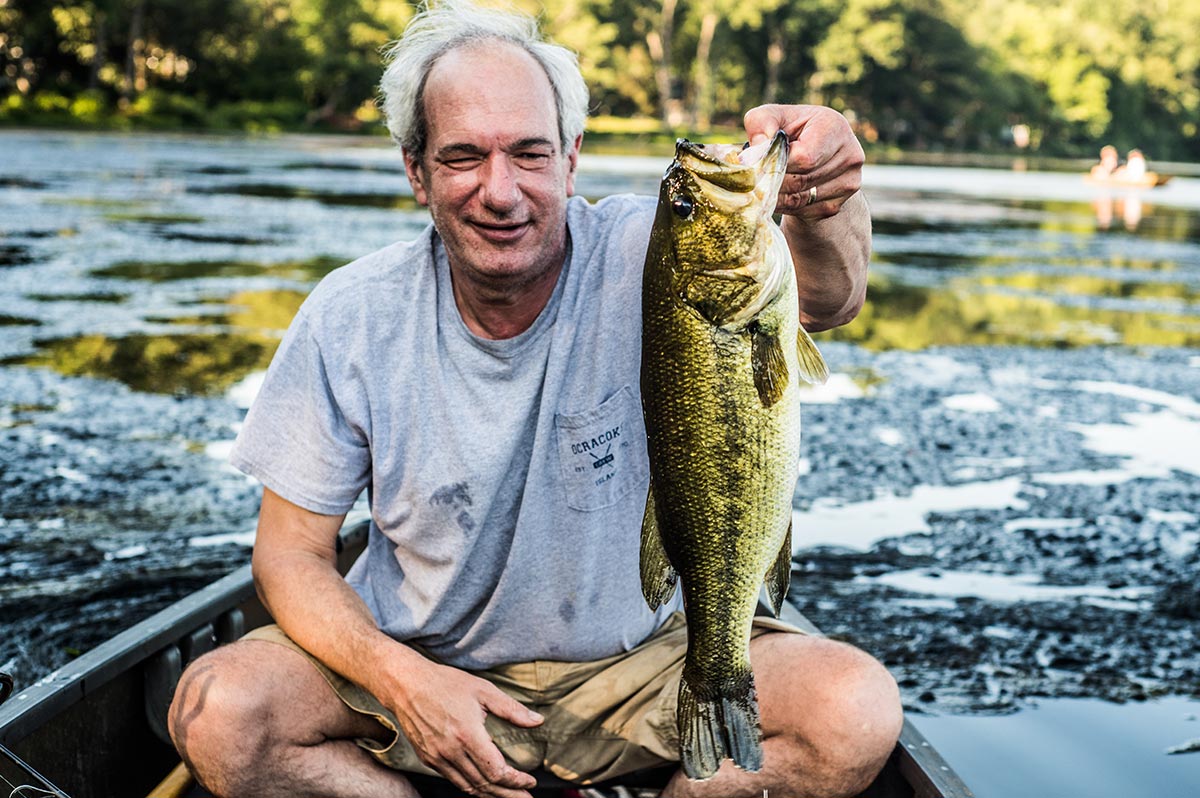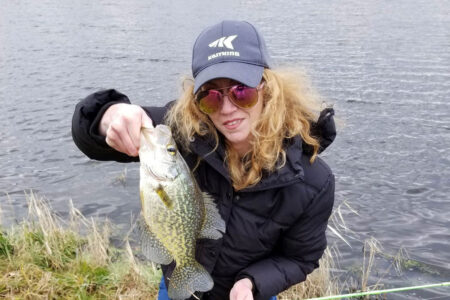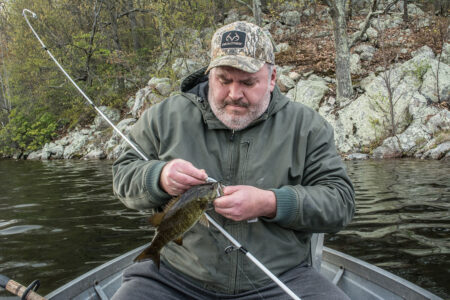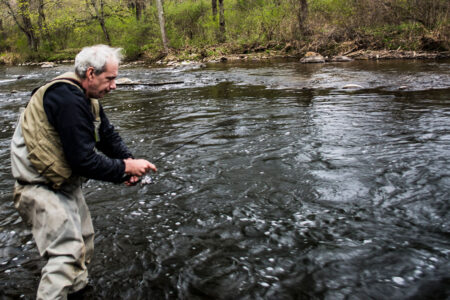Seek out shallow shadows for dog day largemouths under a noon-day sun.
Hot, sunlit afternoons make bass fishing tough. Many anglers wait until evening, expecting an active bite. Bass get caught any time of day, however, though it helps to get on a lake with a game plan.
I stumbled onto a good one early last July. Hot and humid at 3 p.m., we cast worms among mid-lake weeds under direct sunlight. The bass must have buried their heads in the stuff. Feeling the fishing was futile, I took interest in a narrow band of shade along a shoreline. I thought that even though water there would be a foot deep, it might yield something.
Brian Cronk and I paddled the squareback canoe in close, and my first cast with an unweighted Chompers worm fell 3 feet from the bank. A mat of thick algae lay on our side. Mayhem broke out. After boating the bass, I measured it at 20 inches.
When shortly afterwards Fred Matero and I launched his V-hull on another lake, I told him about skinny water shadows and within minutes had my first bass from water a foot deep, a nice one of about 2-1/2 pounds. A short time passed and I fished with Oliver Round at yet another lake, where he caught an 18-incher in late morning shadows against the bank, though from deeper water. And with Brian during an early June afternoon this year, I scored an 18-incher from two feet of water right against a brushy, shadowed bank.
When getting on a lake under hot sunlight, shadows in close pay off. That afternoon with Fred continued to be productive as we picked away at bass holding under shadows over weedy depths. Never overlook shallow water that begs to be ignored, though. Bass get close to the bank because shade serves as cover, but the bank itself is an edge bass relate to. These instances I’ve named are not the only experiences I’ve had catching them there.

Not many years ago, I used to fish a few large ponds from shore. Using the same unweighted worms, I caught bass during summer afternoons often by getting a worm inches from the bank. For me, this tactic came to feel entirely normal, but last July with Brian from a canoe on a larger body of water, it did feel surprising. Most of the bass there get caught from mid-lake weedbeds. Obviously, the bass inhabiting narrow bands of shade along shorelines are not the majority, but they are vulnerable, and catching them is a fun way to begin an outing before you engage with that evening bite.
Look for shady spots with some open water. That might be an opening between the bank and weeds, an opening between overhanging brush, a big pocket edged by algae, or even a very narrow cut between weeds at the surface over water with some depth, but in any case, shade gives largemouths an opportunity to go on feeding during the middle of the afternoon. Summer water temperatures in the shallows typically rise above 80, and since bass have cold-blooded metabolisms, they have to pick away at various forage items. That will not necessarily be small fish they would burn calories while chasing down, but because high temps mean metabolism processes energy fast, the bass are after whatever they can snack on.
I caught the 20-incher and the 2-1/2-pounder while using my 5-1/2-foot medium power St. Croix, a 1000 series reel loaded with 15-pound braid mounted on it. I almost lost the 20-incher to the thick algae, and messing around under shaded weedy depths with the same outfit on the second lake cost me a bigger bass that threw the hook in the thick. I used the shorter rod only because I felt my 7-foot medium-heavy Lew’s Speed Stick, a 2000-series reel loaded with 20-pound braid on that, didn’t cast accurately enough. Since then, I’ve learned that with practice the longer not only feels normal but casts with all the accuracy I need. I’ve compensated for its inherent lack of accuracy compared to the short rod.
I do recommend you fish worms among weeds using braid of at least 20-pound test. Some would say that’s too light, but by muscling bass with a medium-heavy power rod, I think you should be able to get them in the boat.


